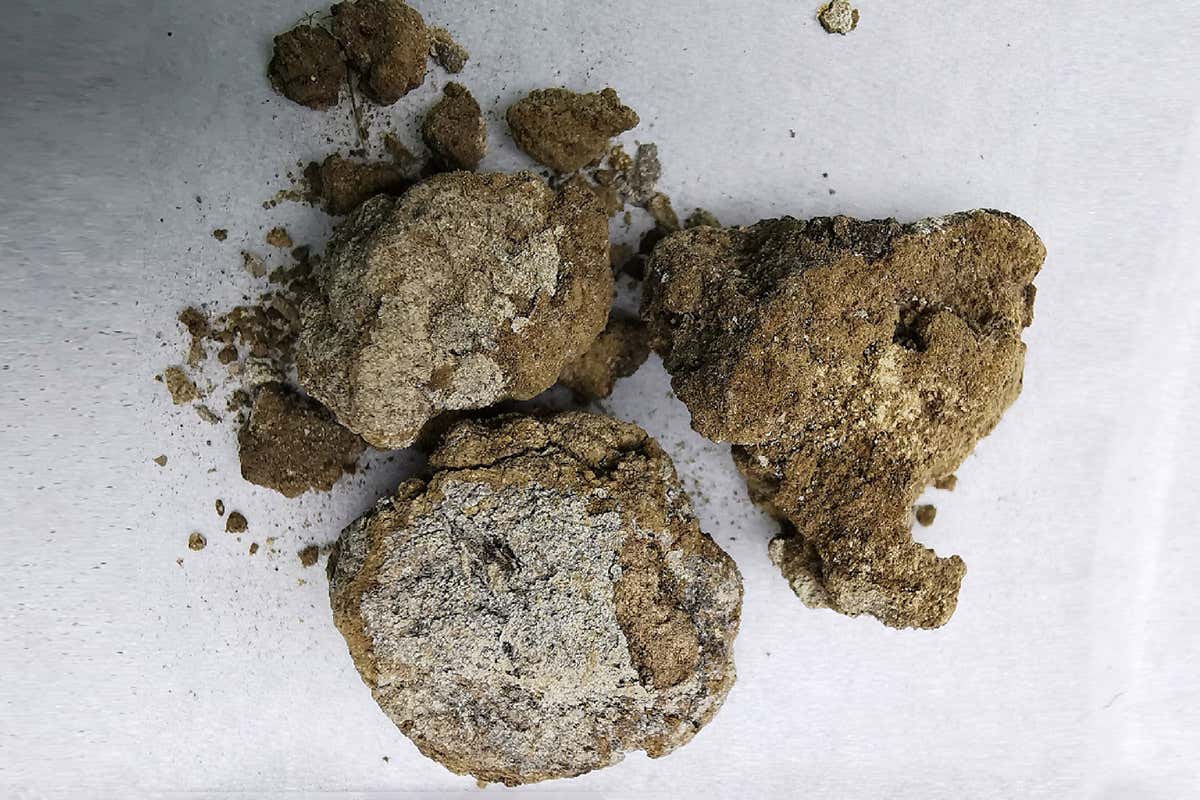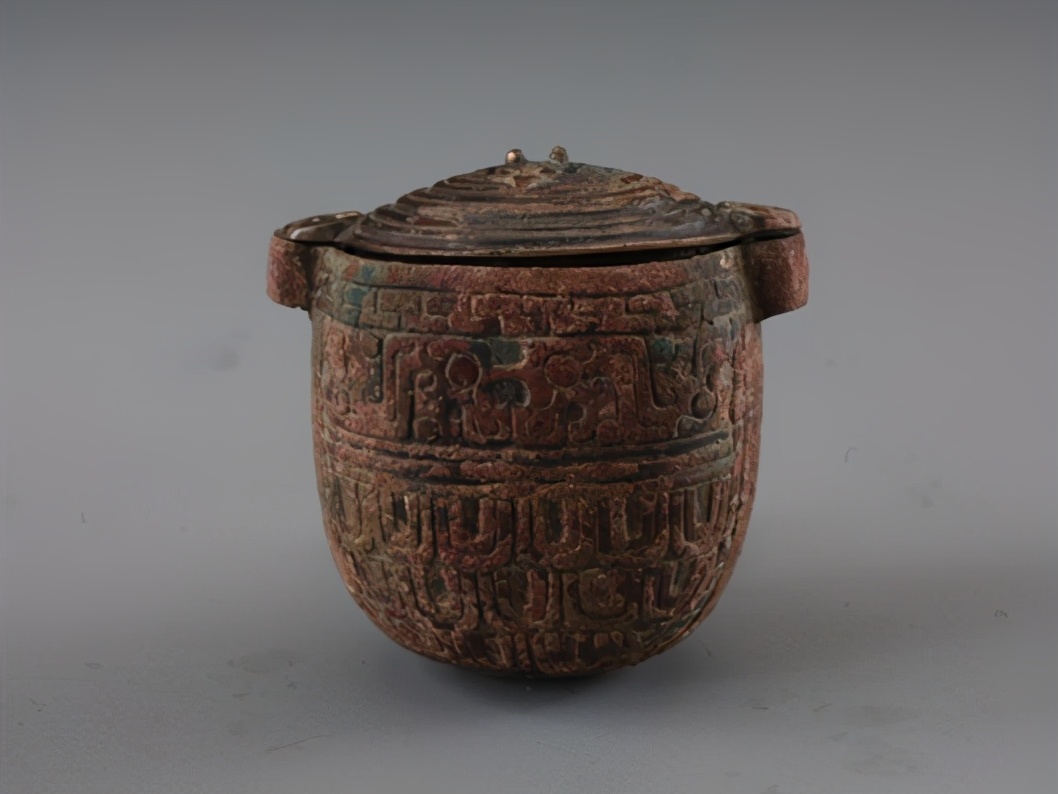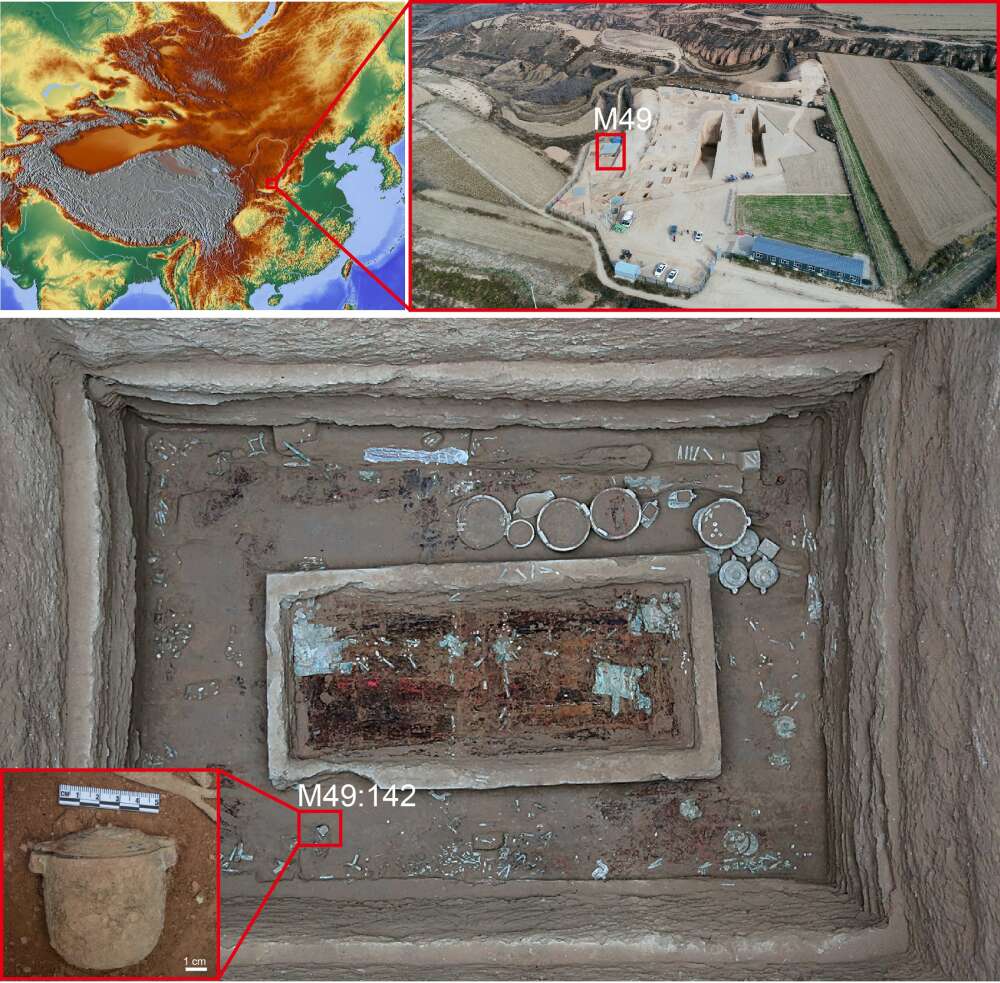In China, they found the oldest face mask made of fat, moon milk and stalactites
Categories: Finds and rescue research abroad , Nálezy nejenom s detektorem v Číně
A bronze vessel with remnants of beef fat and minerals obtained from white stalactites in limestone caves was found in a 2,700-year-old noble tomb in northern China. The analysis confirmed that it is a period fashion face mask. It is the oldest material evidence of the use of cosmetics in China.
The unique find comes from the tomb marked M49 of the Liujiawa Archaeological Site, once the capital of the vassal state of the Zhou Rui Dynasty. It was dated between 700 and 640 BC. The rich grave equipment includes a set of bronze weapons of a man of the aristocratic class and, above all, an artfully decorated bronze vessel, which was placed in an outer box near the nobleman's head. The container is about 6 cm high, U-shaped with two handles and a very tightly closed lid.
This type of vessel from the Spring and Autumn Periods (771 - 476 BC) was also found in the past. Experts only thought that it could be a cosmetics box. Until now, however, it has not been possible to prove it scientifically. Only the latest discovery of a carefully closed container made it possible to subject its preserved contents to a thorough analysis and to finally confirm the assumptions.
When the vessel was opened in the laboratory, scientists found lumps of yellowish and white material. The substance was analyzed by a variety of technologies, including mass spectrometry, X-ray diffraction, isotope analysis, acid extraction, and scanning electron microscopy.
The results revealed that the white particles consist mainly of monohydrocalcite (aqueous form of CaCO3) and yellowish lipid. Monohydrocalcite (hereinafter MHC) mostly occurs in lake deposits or caves, which has just been pointed out by isotope values. Fatty acid analysis of the lipid sample identified ruminant animal fat, probably bovine.
MHC in the form of soft "curd" mud (also known to us as nickamínek or cave moon milk) with a high content of carbonate minerals comes from limestone caves. It was collected in China as part of a Taoist ritual. The caves were symbolic because it was believed that the stalactites in the caves (metaphorically the uterus) were formed from the liquid souls of the hills. The glossy whiteness of the best stalactites was compared to the most valuable jade and highly valued for their medical and cosmetic properties. After collection, stalactites and moon milk were dried, ground and processed to obtain the purest powders.
Cosmetic production became an specialized industry for the supply of nobility at an early stage. The spring and autumn period. Historical records from before the Qing Dynasty describe facial whitening as a sign of cultural pride. The bleached face could cover the skin defects and mask them with a layer of homogeneous color, which also improved the symmetry of the face in contrast to black lashes and hair. The bleached face also eliminates wrinkles and creates an impression of youth and beauty in a majestic way that has attracted so much the aristocratic class.
The analysis of the found product confirms the oldest cream cosmetics in China. Not only did it shift its historical description, it also confirmed the use of cave minerals along with the Taoist cult, which adds mystical elements to facial aesthetics. The newly acquired information about men's face masks is also very interesting, because until the Spring and Autumn Periods, use is known only for women. The previous oldest document of men's cosmetics is 1000 years younger.




Roman Němec
The article is included in categories: